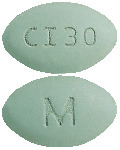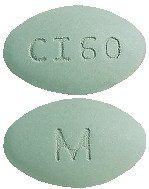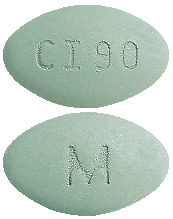SUMMARY CMI
CINACALCET VIATRIS
Consumer Medicine Information (CMI) summary
The full CMI on the next page has more details. If you are worried about using this medicine, speak to your doctor or pharmacist.
1. Why am I using CINACALCET VIATRIS?
CINACALCET VIATRIS contains the active ingredient cinacalcet. CINACALCET VIATRIS is used to treat secondary hyperparathyroidism, primary hyperparathyroidism and high blood calcium levels in people with cancer of the parathyroid gland.
For more information, see Section 1. Why am I using CINACALCET VIATRIS? in the full CMI.
2. What should I know before I use CINACALCET VIATRIS?
Do not use if you have ever had an allergic reaction to cinacalcet or any of the ingredients listed at the end of the CMI.
Talk to your doctor if you have any other medical conditions, take any other medicines, or are pregnant or plan to become pregnant or are breastfeeding.
For more information, see Section 2. What should I know before I use CINACALCET VIATRIS? in the full CMI.
3. What if I am taking other medicines?
Some medicines may interfere with CINACALCET VIATRIS and affect how it works.
A list of these medicines is in Section 3. What if I am taking other medicines? in the full CMI.
4. How do I use CINACALCET VIATRIS?
- Secondary hyperparathyroidism: the usual starting dose for this medicine is 30 mg (one tablet) once per day.
- Primary hyperparathyroidism/cancer of the parathyroid gland: the usual starting dose for this medicine is 30 mg (one tablet) twice per day.
- Should be taken orally either with, or shortly after food.
More instructions can be found in Section 4. How do I use CINACALCET VIATRIS? in the full CMI.
5. What should I know while using CINACALCET VIATRIS?
| Things you should do |
|
| Things you should not do |
|
| Driving or using machines |
|
| Drinking alcohol |
|
| Looking after your medicine |
|
For more information, see Section 5. What should I know while using CINACALCET VIATRIS? in the full CMI.
6. Are there any side effects?
Speak to your doctor if you have any of these less serious side effects and they worry you: nausea and vomiting, dizziness or light headedness or worsening of a heart condition, rash.
Call your doctor straight away, or go straight to the Emergency Department at your nearest hospital if you notice any of these serious side effects: lower calcium level, seizure, bleeding from the stomach or intestines, allergic reaction, skin rash over a large area of the body, swelling of the face, lips, mouth, tongue or throat, shortness of breath, wheezing, faintness, rapid pulse, etc.
For more information, including what to do if you have any side effects, see Section 6. Are there any side effects? in the full CMI.
FULL CMI
CINACALCET VIATRIS
Active ingredient(s): cinacalcet hydrochloride
Consumer Medicine Information (CMI)
This leaflet provides important information about using CINACALCET VIATRIS. You should also speak to your doctor or pharmacist if you would like further information or if you have any concerns or questions about using CINACALCET VIATRIS.
Where to find information in this leaflet:
1. Why am I using CINACALCET VIATRIS?
2. What should I know before I use CINACALCET VIATRIS?
3. What if I am taking other medicines?
4. How do I use CINACALCET VIATRIS?
5. What should I know while using CINACALCET VIATRIS?
6. Are there any side effects?
7. Product details
1. Why am I using CINACALCET VIATRIS?
CINACALCET VIATRIS contains the active ingredient cinacalcet hydrochloride.
CINACALCET VIATRIS is used to treat:
- a condition called secondary hyperparathyroidism (high-perpara-THIGH-royd-izm) in people with kidney disease who require dialysis treatment.
- a condition called primary hyperparathyroidism when surgical removal of the parathyroid gland is not a treatment option.
- high blood calcium levels in people with cancer of the parathyroid gland.
Secondary hyperparathyroidism
Kidney disease can cause a condition called secondary hyperparathyroidism, which can have a big impact on your health. Four small glands located behind the thyroid gland in your neck are called parathyroid glands. They make a hormone called parathyroid hormone (PTH). Normally, PTH makes sure you have just enough calcium and phosphorus in your blood to keep your bones, heart, muscles, nerves and blood vessels working well. When your kidneys are working properly, PTH keeps your calcium and phosphorus levels normal by moving the right amounts of calcium and phosphorus in and out of your bones.
When your kidneys aren't working properly, the calcium and phosphorus balance in your body is upset, and your parathyroid glands send out too much PTH to your body. This condition is called secondary hyperparathyroidism, and it can cause bone disease and also may be a risk factor for heart disease and abnormal calcium deposits in blood vessels and other parts of the body. This medicine lowers PTH by telling your parathyroid glands to stop releasing too much PTH into your blood. It also lowers your calcium and phosphorus levels.
Primary hyperparathyroidism/ Cancer of the parathyroid gland
An overactive parathyroid gland results in a condition called primary hyperparathyroidism, which can impact your health. Four small glands located behind the thyroid gland in your neck are called parathyroid glands. They make a hormone called parathyroid hormone (PTH). When your parathyroid glands are working normally, PTH keeps your calcium levels normal by moving the right amounts of calcium in and out of your bones.
Primary hyperparathyroidism is caused by an enlargement of one or more of the parathyroid glands occasionally due to cancer of the parathyroid gland. In primary hyperparathyroidism, your parathyroid glands send out too much PTH to your body and your blood level of calcium becomes high. This medicine lowers PTH by telling your parathyroid glands to stop releasing too much PTH into your blood. It also lowers your calcium and phosphorus levels.
Your doctor may have prescribed this medicine for another reason. Ask your doctor if you have any questions about why this medicine has been prescribed for you.
2. What should I know before I use CINACALCET VIATRIS?
Warnings
Do not use CINACALCET VIATRIS if:
- you are allergic to cinacalcet, or any of the ingredients listed at the end of this leaflet.
Some of the symptoms of an allergic reaction may include:
- shortness of breath
- wheezing or difficulty breathing
- swelling of the face, lips, tongue or other parts of the body
- rash, itching or hives on the skin - Always check the ingredients to make sure you can use this medicine.
- Do not give this medicine to a child.
- Do not take this medicine after the expiry date printed on the pack or if the packaging is torn or shows signs of tampering.
If it has expired or is damaged, return it to your pharmacist for disposal.
If you are not sure whether you should start taking this medicine, talk to your doctor.
Check with your doctor if you:
- have allergies to any other medicines, foods, preservatives or dyes.
- take any medicines for any other condition.
- have or have had any of the following medical conditions:
- seizures (sometimes called fits or convulsions, see 'Side effects' section)
- heart failure (or a heart condition, see 'Side effects' section)
- intolerance to sugars (sometimes called lactose intolerance, see 'Ingredients' section)
- ulcers (stomach or intestinal), serious vomiting, inflammation of the stomach and swallowing tube
During treatment, you may be at risk of developing certain side effects. It is important you understand these risks and how to monitor for them. See additional information under Section 6. Are there any side effects?
Pregnancy and breastfeeding
Check with your doctor if you are pregnant or intend to become pregnant.
Talk to your doctor if you are breastfeeding or intend to breastfeed.
Your doctor can discuss with you the risks and benefits involved.
3. What if I am taking other medicines?
Tell your doctor or pharmacist if you are taking any other medicines, including any medicines, vitamins or supplements that you buy without a prescription from your pharmacy, supermarket or health food shop.
Tell your doctor if you are taking any of the following medicines:
- ketoconazole,
- erythromycin,
- itraconazole,
- rifampicin,
- phenytoin,
- amitriptyline,
- flecainide,
- vinblastine,
- thioridazine, or
- medicines known as tricyclic antidepressants
Some of these medicines can affect how this medicine works, while others are affected by this medicine.
Your doctor and pharmacist have more information on medicines to be careful with or avoid while taking this medicine.
Check with your doctor or pharmacist if you are not sure about what medicines, vitamins or supplements you are taking and if these affect CINACALCET VIATRIS.
4. How do I use CINACALCET VIATRIS?
How much to take
- If you are being treated for secondary hyperparathyroidism
The usual starting dose for this medicine is 30 mg (one tablet) once per day.
Your doctor will take regular blood samples to measure how you are responding to this medicine and will adjust your dose as necessary in order to control your parathyroid hormone, calcium and phosphate levels.
Once your condition is under control, your doctor will continue to regularly check your blood and your dose may be adjusted further in order to maintain long-term control of your parathyroid hormone, calcium and phosphate levels. - If you are being treated for primary hyperparathyroidism/cancer of the parathyroid gland
The usual starting dose for this medicine is 30 mg (one tablet) twice per day.
Your doctor will take regular blood samples to measure how you are responding to this medicine and will adjust your dose as necessary in order to control your calcium levels.
Once your condition is under control, your doctor will continue to regularly check your blood and your dose may be adjusted further in order to maintain long-term control of your calcium levels. - Follow the instructions provided and use CINACALCET VIATRIS until your doctor tells you to stop.
When to take CINACALCET VIATRIS
- CINACALCET VIATRIS should be taken orally either with, or shortly after food.
How to take CINACALCET VIATRIS
- The tablets must be taken whole and are not to be divided.
- Follow all directions given to you by your doctor, nurse and pharmacist carefully.
They may differ from the information in this leaflet.
If you do not understand the instructions below, ask your doctor, nurse or pharmacist for help.
If you forget to take CINACALCET VIATRIS
CINACALCET VIATRIS should be used regularly at the same time each day.
If it is almost time for your next dose, skip the dose you missed and take your next dose when you are meant to. Otherwise, take it as soon as you remember, and then go back to taking your medicine as you would normally.
Do not take a double dose to make up for the dose you missed.
If you are not sure what to do, ask your doctor or pharmacist.
If you have trouble remembering to take your medicine, ask your pharmacist for some hints.
If you take too much CINACALCET VIATRIS
If you think that you have used too much CINACALCET VIATRIS, you may need urgent medical attention.
You should immediately:
- phone the Poisons Information Centre
(Australia telephone 13 11 26) for advice, or - contact your doctor, or
- go to the Emergency Department at your nearest hospital.
You should do this even if there are no signs of discomfort or poisoning.
If you do not understand the instructions on the box, ask your doctor or pharmacist for help.
5. What should I know while using CINACALCET VIATRIS?
Things you should do
- If you are about to be started on any new medicine, remind your doctor and pharmacist that you are taking this medicine.
- Tell any other doctors, dentists and pharmacists who treat you that you are taking this medicine.
- If you are going to have surgery, tell the surgeon or anaesthetist that you are taking this medicine.
It may affect other medicines used during surgery. - If you are about to have any blood tests, tell your doctor that you are taking this medicine.
It may interfere with the results of some tests. - Keep all of your doctor's appointments so that your progress can be checked.
Call your doctor straight away if you:
- become pregnant while taking this medicine.
Things you should not do
- Do not take CINACALCET VIATRIS to treat any other complaints unless your doctor tells you to.
- Do not give your medicine to anyone else, even if they have the same condition as you.
Driving or using machines
Be careful before you drive or use any machines or tools until you know how CINACALCET VIATRIS affects you.
CINACALCET VIATRIS may cause dizziness in some people. If you have any of these symptoms, do not drive, operate machinery or do anything else that could be dangerous.
Drinking alcohol
Tell your doctor if you drink alcohol.
Looking after your medicine
- Keep your tablets in a cool dry place where the temperature stays below 25°C.
Follow the instructions in the carton on how to take care of your medicine properly.
Store it in a cool dry place away from moisture, heat or sunlight; for example, do not store it:
- in the bathroom or near a sink, or
- in the car or on window sills.
Heat and dampness can destroy some medicines.
Keep it where young children cannot reach it.
A locked cupboard at least one-and-a-half metres above the ground is a good place to store medicines.
Getting rid of any unwanted medicine
If you no longer need to use this medicine or it is out of date, take it to any pharmacy for safe disposal.
Do not use this medicine after the expiry date.
6. Are there any side effects?
Tell your doctor or pharmacist as soon as possible if you do not feel well while you are taking CINACALCET VIATRIS.
All medicines can have side effects. If you do experience any side effects, most of them are minor and temporary. However, some side effects may need medical attention.
Do not be alarmed by the following lists of side effects. You may not experience any of them.
See the information below and, if you need to, ask your doctor or pharmacist if you have any further questions about side effects.
Less serious side effects
| Less serious side effects | What to do |
| Speak to your doctor if you have any of these less serious side effects and they worry you. |
Serious side effects
| Serious side effects | What to do |
| Call your doctor straight away, or go straight to the Emergency Department at your nearest hospital if you notice any of these serious side effects. You may need urgent medical attention. |
Tell your doctor or pharmacist if you notice anything else that may be making you feel unwell.
Other side effects not listed here may occur in some people.
Reporting side effects
After you have received medical advice for any side effects experience, you can report side effects to the Therapeutic Goods Administration online at www.tga.gov.au/reporting-problems
By reporting side effects, you can help provide more information on the safety of this medicine.
Always make sure you speak to your doctor or pharmacist before you decide to stop taking any of your medicines.
7. Product details
This medicine is only available with a doctor's prescription.
What CINACALCET VIATRIS contains
| Active ingredient (main ingredient) | cinacalcet hydrochloride |
| Other ingredients (inactive ingredients) | microcrystalline cellulose colloidal anhydrous silica crospovidone povidone magnesium stearate OPADRY complete film coating system 03K51674 GREEN (ARTG PI No: 109807). |
| Potential allergens | sulfites |
Do not take this medicine if you are allergic to any of these ingredients.
What CINACALCET VIATRIS looks like
CINACALCET VIATRIS 30 mg: green, film-coated, oval, biconvex, bevelled edge tablet debossed with M on one side of the tablet and CI30 on the other side. (AUST R 289379).
CINACALCET VIATRIS 60 mg: green, film-coated, oval, biconvex, bevelled edge tablet debossed with M on one side of the tablet and CI60 on the other side. (AUST R 289380).
CINACALCET VIATRIS 90 mg: green, film-coated, oval, biconvex, bevelled edge tablet debossed with M on one side of the tablet and CI90 on the other side. (AUST R 289381).
Who distributes CINACALCET VIATRIS
Alphapharm Pty Ltd trading as Viatris
Level 1, 30 The Bond
30-34 Hickson Road
Millers Point NSW 2000
www.viatris.com.au
Phone: 1800 274 276
This leaflet was prepared in June 2023.
CINACALCET VIATRIS_cmi\Jun23/00
Published by MIMS August 2023




 The incidence of serious adverse events (29% vs 31%) and deaths (2% vs 3%) was similar in the cinacalcet and placebo groups, respectively.
The incidence of serious adverse events (29% vs 31%) and deaths (2% vs 3%) was similar in the cinacalcet and placebo groups, respectively. Mean iPTH and Ca x P by treatment group for the overall study population during the 6-month treatment period are presented in Figure 1 and Figure 2.
Mean iPTH and Ca x P by treatment group for the overall study population during the 6-month treatment period are presented in Figure 1 and Figure 2.
 In patients receiving cinacalcet, reductions in iPTH and Ca x P occurred within 2 weeks and were maintained for at least 12 months of treatment (n = 99 on cinacalcet, 111 on placebo).
In patients receiving cinacalcet, reductions in iPTH and Ca x P occurred within 2 weeks and were maintained for at least 12 months of treatment (n = 99 on cinacalcet, 111 on placebo).
 Whilst a 15 mg dose of cinacalcet was used in the paediatric PK study, this dose strength is not registered.
Whilst a 15 mg dose of cinacalcet was used in the paediatric PK study, this dose strength is not registered. Chemical name: N-[1-(R)-(1-naphthyl) ethyl]-3-[3-(trifluoromethyl) phenyl]-1-aminopropane hydrochloride.
Chemical name: N-[1-(R)-(1-naphthyl) ethyl]-3-[3-(trifluoromethyl) phenyl]-1-aminopropane hydrochloride.